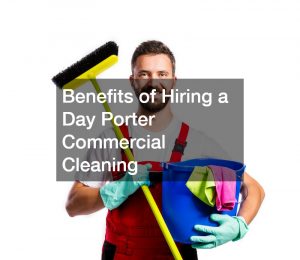
Manual labor today is a common practice in many industries, and although machines and robotic arms have rendered some manual work obsolete, in many lines of work, a human being’s physical labor is still relevant, and in other cases, “manual labor” can be considered a hybrid of human and machine work; that is, workers operating or driving devices such as forklifts, balers, construction tools like jackhammers, and more. In many cases, simple training is all that is needed to qualify a worker to perform this labor, but equipment expertise, at least on a basic level, is needed to ensure workplace safety, or else bodily harm or damage to property can be the result, and in some cases, this can result in cases of workers’ compensation or a construction worker looking for a construction lawyer to back them up. A forklift operator, loading dock repair, parts replacement, and more can all constitute manual labor, and much of this calls for equipment expertise so that a safe, productive day can be had. And in some cases, equipment expertise means knowing how to handle hazardous materials such as natural gas under pressure, liquid nitrogen, gasoline, or even toxic by-products from chemistry plants or refineries. How can equipment expertise make the difference here?
Forklifts
A major component of equipment expertise means having the skills and proper mindset to operate a forklift, which can be found nearly anywhere from a construction site to a warehouse to even a grocery store’s stock room, or any other retailer. Forklifts are, after all, motor vehicles with a loading tray in front, and if used carelessly, they can hit or knock over other items and damage them, or badly injure a person. To operate them safely, an operator should be trained and authorized first, and this process requires renewal once every three years so that safety standards can be maintained. There is good reason for this; it has been determined that forklifts account for 1% of all accidents that take place in warehouses and factories, and they alone cause 10% of all injuries in those factories and warehouses. Generally, although forklifts can drive up to eight miles per hour, a common guideline is to drive only at a speed of three miles per hour in areas with a lot of foot traffic, to give workers time to see and avoid the forklift and avoid a collision or accident.
Other Safety Measures
Equipment expertise often involves forklifts, but other pieces of equipment require training and certification to use, and in some cases, there is much more danger involved. A construction site is a good example of where equipment expertise is vital, since many different tools and vehicles are being used here. A jackhammer, for example, is a powerful handheld tool for breaking up hard materials underfoot, but this tool can easily cause injury or serious property damage if used improperly. Similarly, blow torches may be used at a construction site for welding, and these open flames can easily cause a fire hazard (especially if flammable gases or fumes are present) or can lead to burns on construction workers. Vehicles aside from forklifts will be present, such as bulldozers, concrete mixers, wrecking balls (if the job calls for it), backhoes, and more, and the operator for any of these vehicles should have a specialized driver’s license to operate them, and of course these crew members should always have high awareness of where they are and what they are doing, to prevent property damage or hurting someone. Similarly, workers on foot should always be wary of where vehicles are moving and what they are doing, or a worker may run the risk of walking right behind a dump truck that is moving backwards, or get hit by a steamroller (especially if the driver is distracted by something).
A slightly less common but no less important aspect of equipment expertise is knowing how to handle containers, vehicles, valves, nozzles, and more for hazardous materials, and often, just transporting hazardous material calls for special training (either online or in person) by OSHA, and this work often involves protective gear as well. Goggles can protect the eyes from fumes or particles, while full body suits protect the skin from dry ice or liquid nitrogen, and gas masks protect against stronger fumes.





